Returning by underground from Wat Pho to Chinatown in Bangkok, I got off one station earlier because I wanted to stroll a bit more, recalling the route my friend Raša and I took during our meeting and time together.
First, I walked along the Ong Ang Canal, then headed towards the central part of Chinatown. This led me to another important temple in Chinatown, Wat Mangkon Kamalawat. Established in 1871, it is the largest and most important Chinese Buddhist temple in Bangkok. During my visit, some parts of the temple were under renovation, so I passed through some sort of wooden tunnels, but the central area was operational.
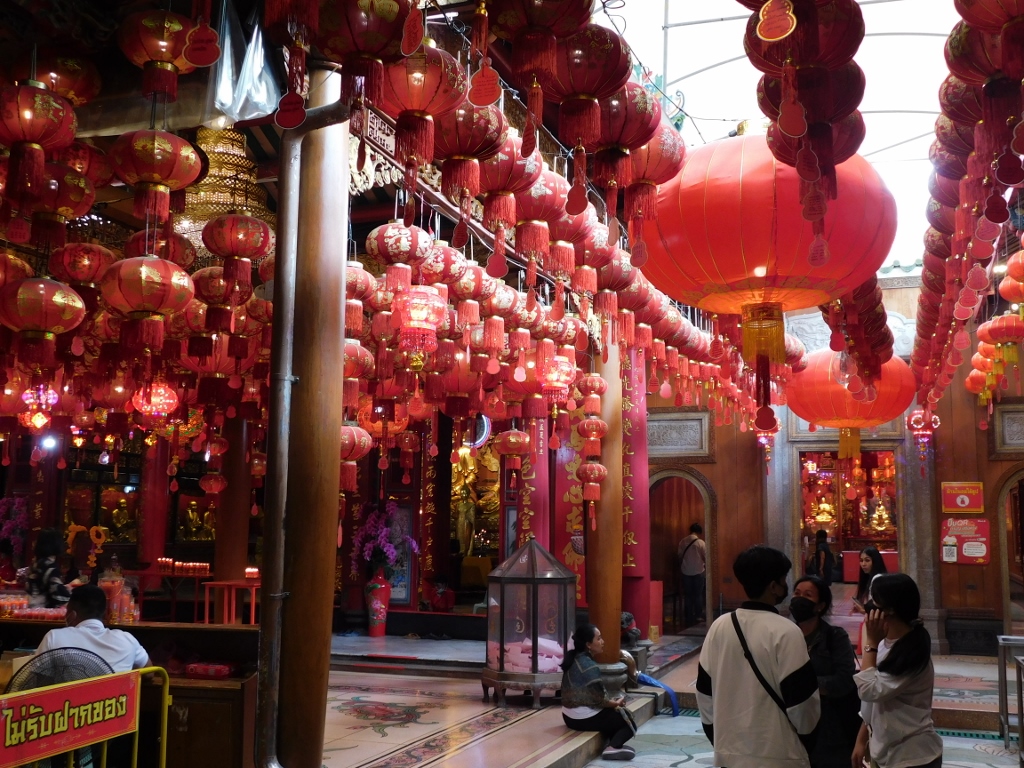 Wat Mangkon Kamalawat, the interior
Wat Mangkon Kamalawat, the interior
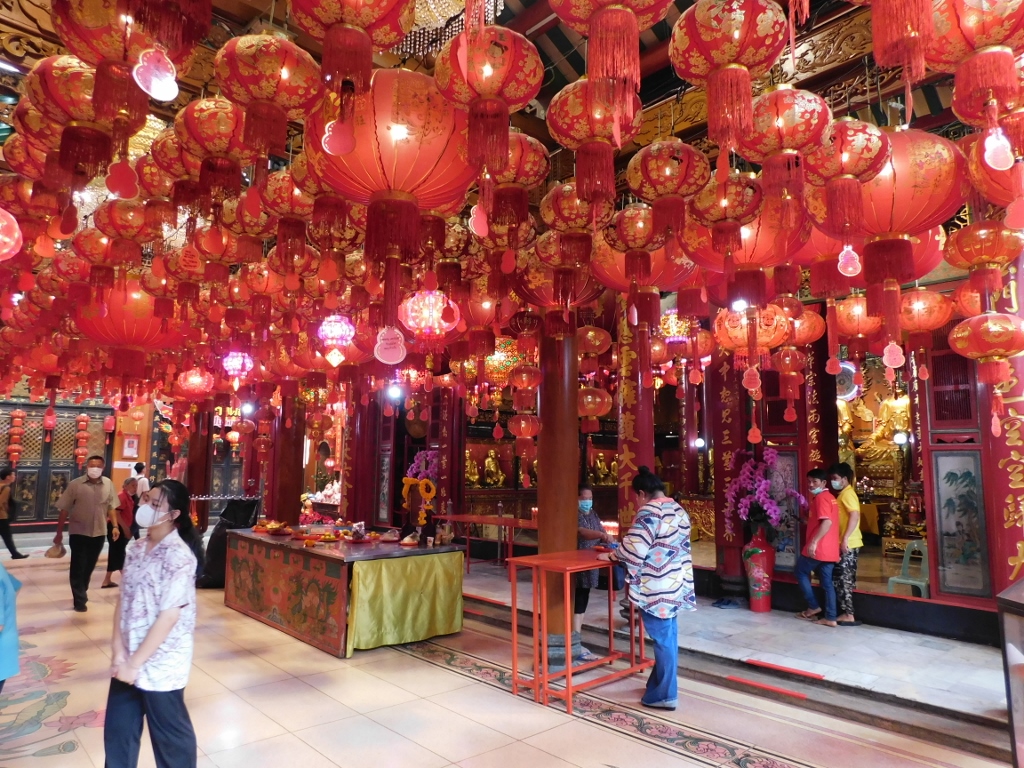 Wat Mangkon Kamalawat, the interior
Wat Mangkon Kamalawat, the interior
Although I must admit that I don’t understand the symbolism of the multitude of details here, I was absolutely fascinated, occasionally feeling quite confused.
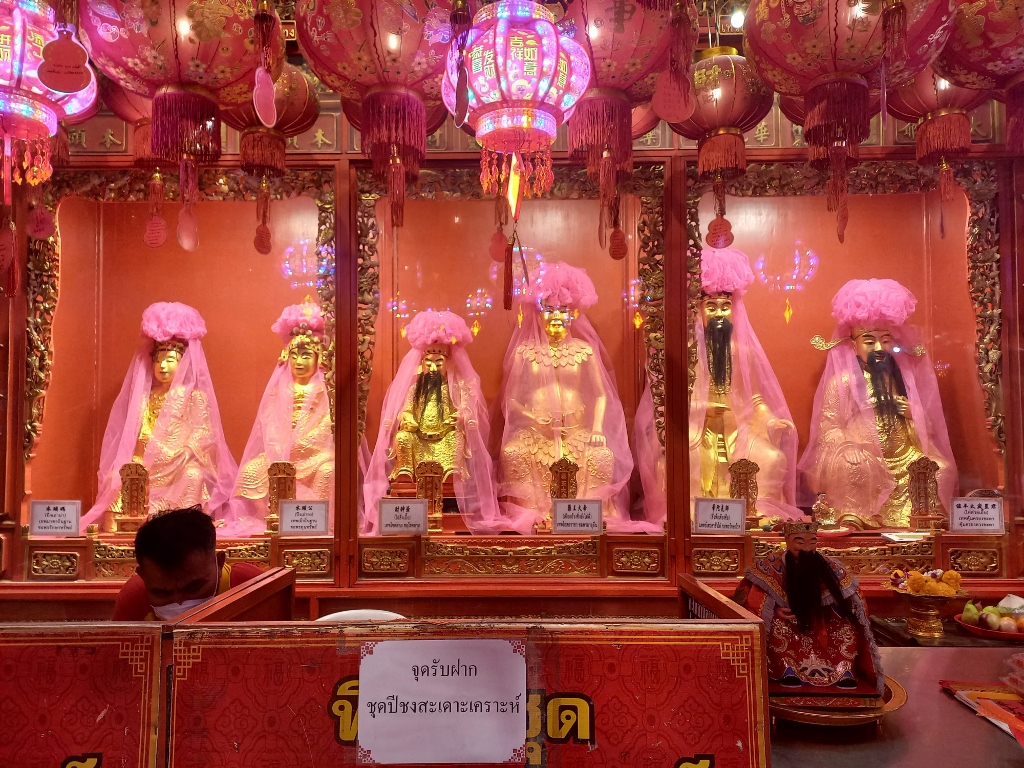 Wat Mangkon Kamalawat, a detail
Wat Mangkon Kamalawat, a detail
 Wat Mangkon Kamalawat, a detail
Wat Mangkon Kamalawat, a detail
I could understand and recognise some things, for example, that the Year of the Rabbit was in progress, hence the multitude of rabbit figures in one place, but then I would be puzzled by dolls with greetings in English.
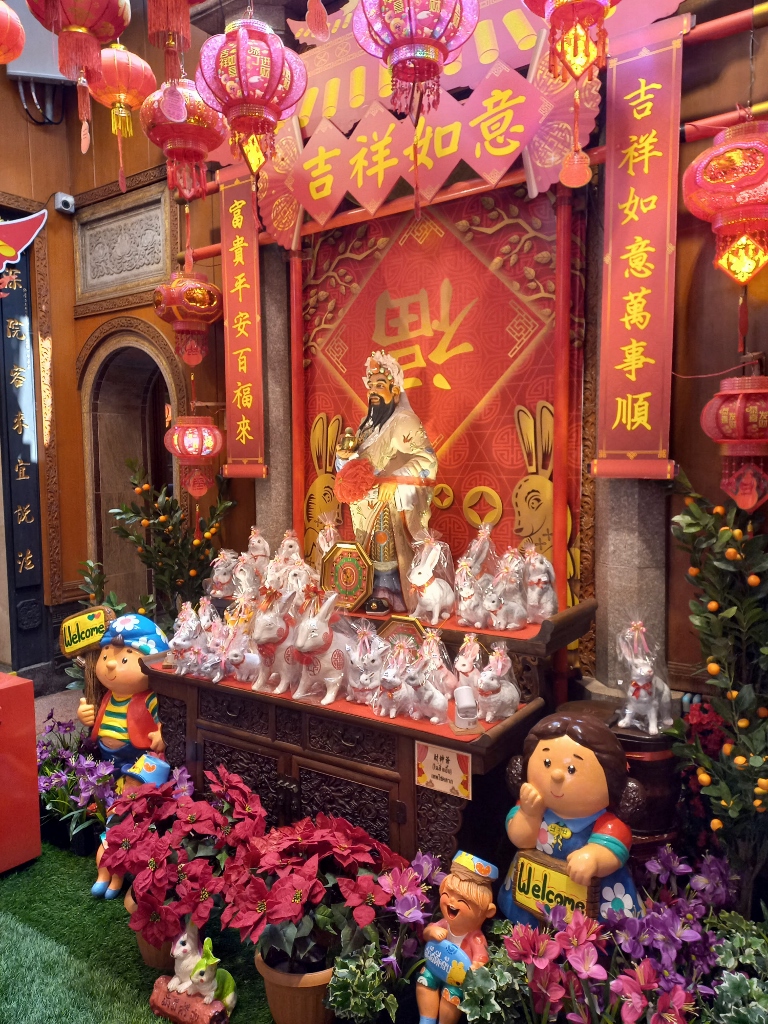 Wat Mangkon Kamalawat, a detail
Wat Mangkon Kamalawat, a detail
Nevertheless, it was also fun, so I had a nice walk through the temple.
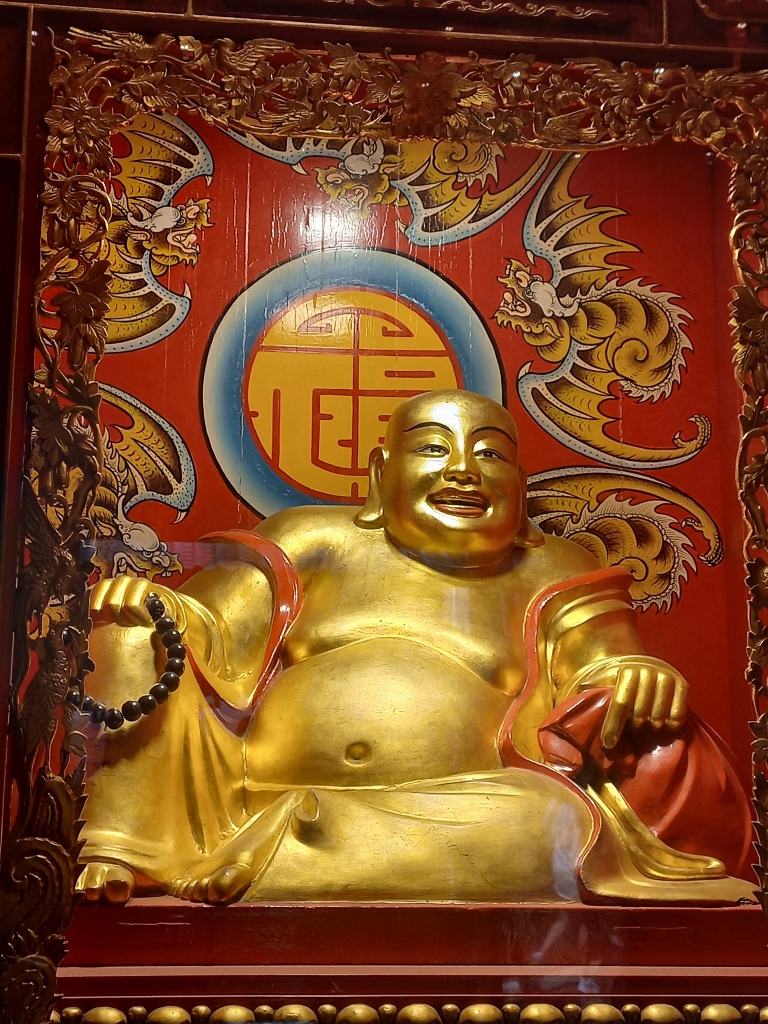 Wat Mangkon Kamalawat, a detail
Wat Mangkon Kamalawat, a detail
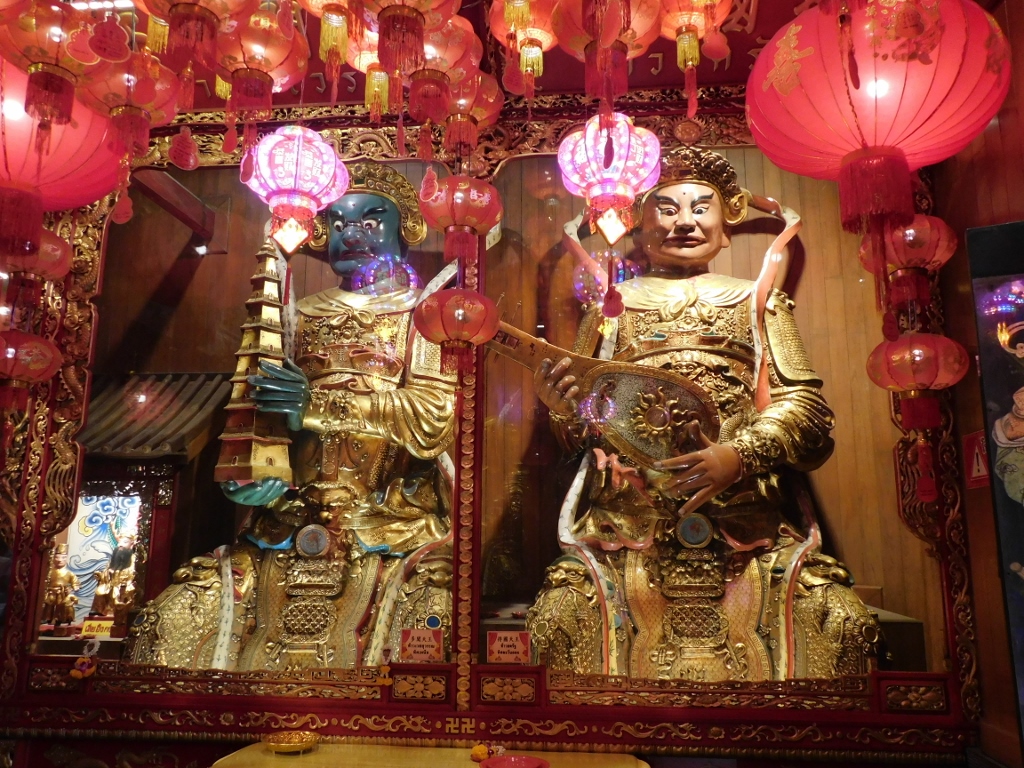 Wat Mangkon Kamalawat, a detail
Wat Mangkon Kamalawat, a detail
When I left the temple, I saw numerous stalls again, where food offerings for the temple were sold, but there were also beautiful wreaths made of fresh flowers serving the same purpose.
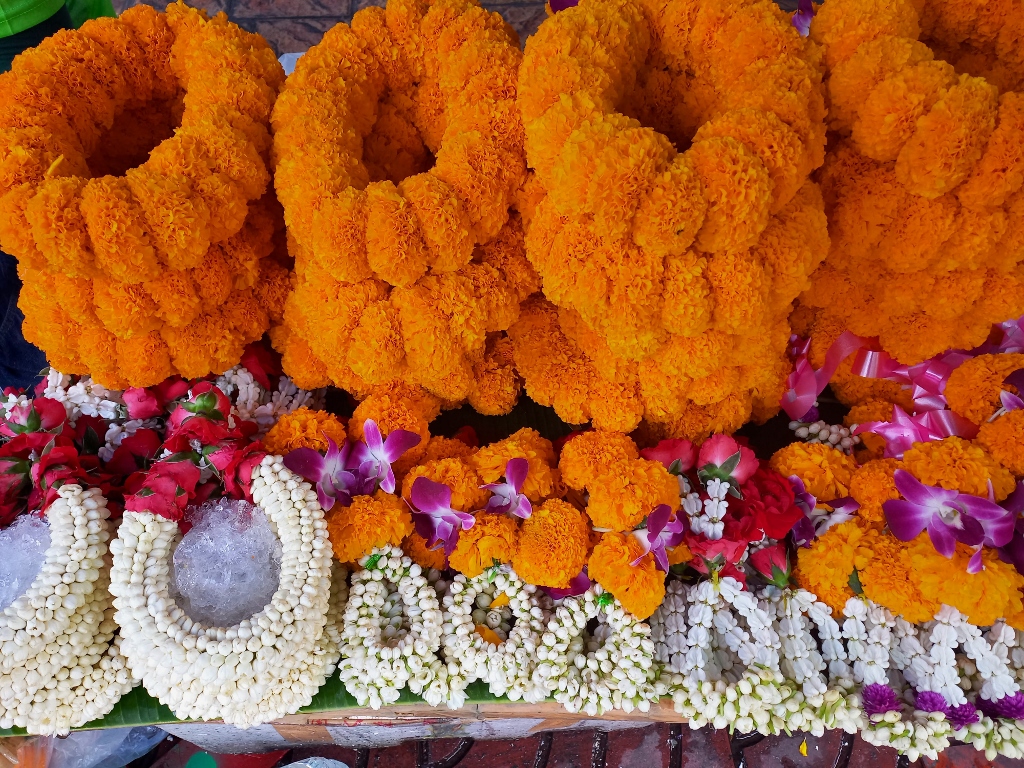 Fresh flower wreaths used as offerings
Fresh flower wreaths used as offerings
Along the way, I also saw some items for sale and I was not certain whether they were meant for consumption or for offerings in a temple. It wouldn’t surprise me if they serve both purposes or something else that didn’t even occur to me.
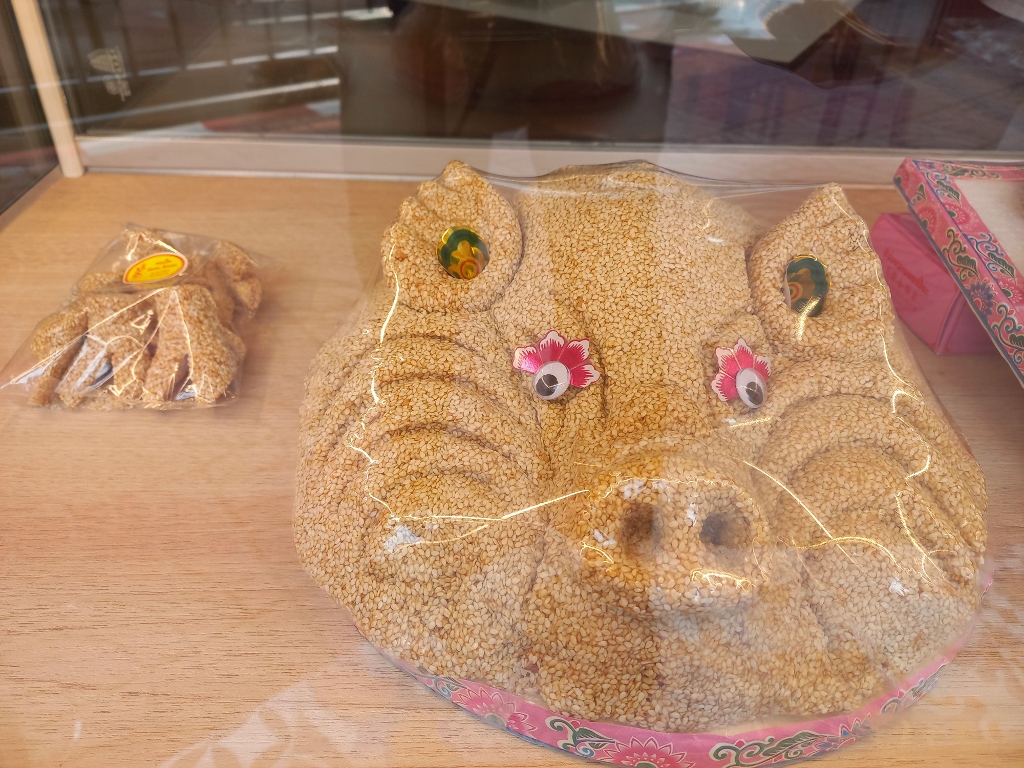 To eat or to offer, the question is now
To eat or to offer, the question is now
While heading towards the hotel, I inevitably passed by numerous places selling food clearly meant for eating. At one spot, I bought a couple of Chinese steamed buns filled with pork and vegetables. It was exceptionally delicious, but I expected nothing less since I was already familiar with this dish from earlier experiences.
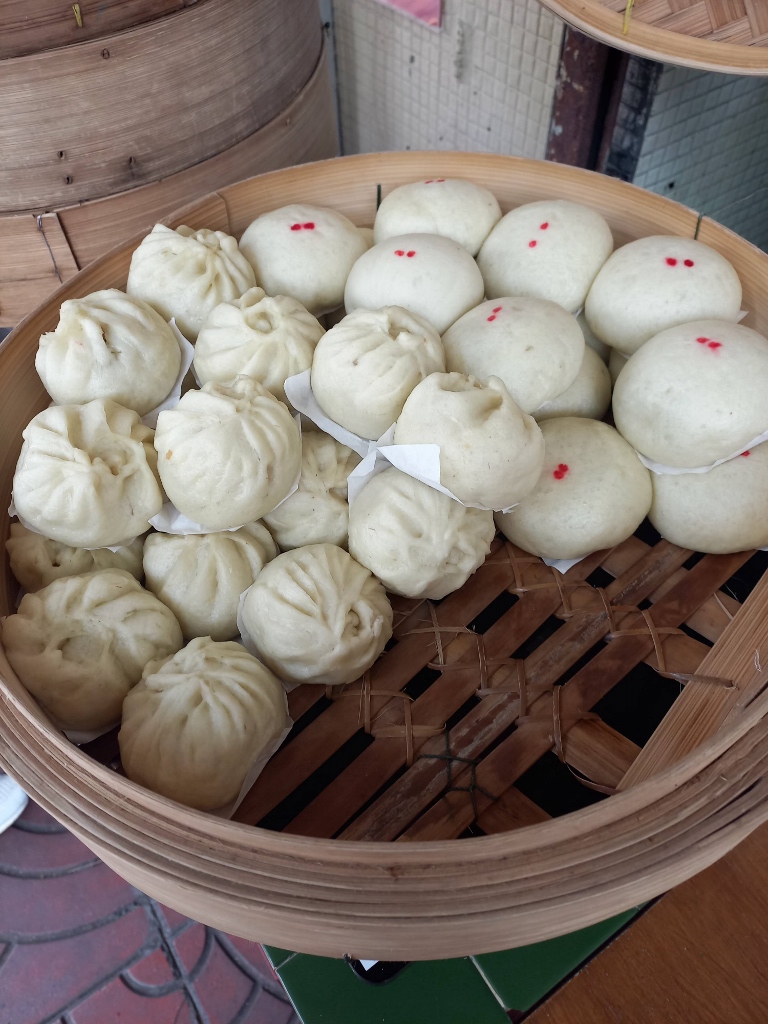 Chinese steam buns
Chinese steam buns
Then I went back to my hotel room to cool off, rest and even take a nap before later meeting up with Luke.
Luke is the son of my friend Rajna from England, but since he spends about half a year in Bangkok, there had been an idea from the very beginning of my stay that we would meet. We had already met on a previous occasion when I was a guest at his parents’ home in Dorset, but it was certainly interesting to encounter each other here. At the beginning of my stay, we hadn’t managed to coordinate, but the meeting was now quite certain. He is an active young man and I was very grateful that he took some time for our encounter.
Although I wasn’t hungry when he came to pick me up at the hotel and it wasn’t crucial for us to go somewhere to eat since Luke is an excellent chef specialised in Thai cuisine (he has a couple of restaurants with top-notch Thai food in London), it was still interesting when he took me to the market within the Chinatown area. We used a side passage that led through sections that resembled more a wholesale market. It was evident that he felt at home there and I found it very intriguing, as I don’t think I would have ventured there on my own.
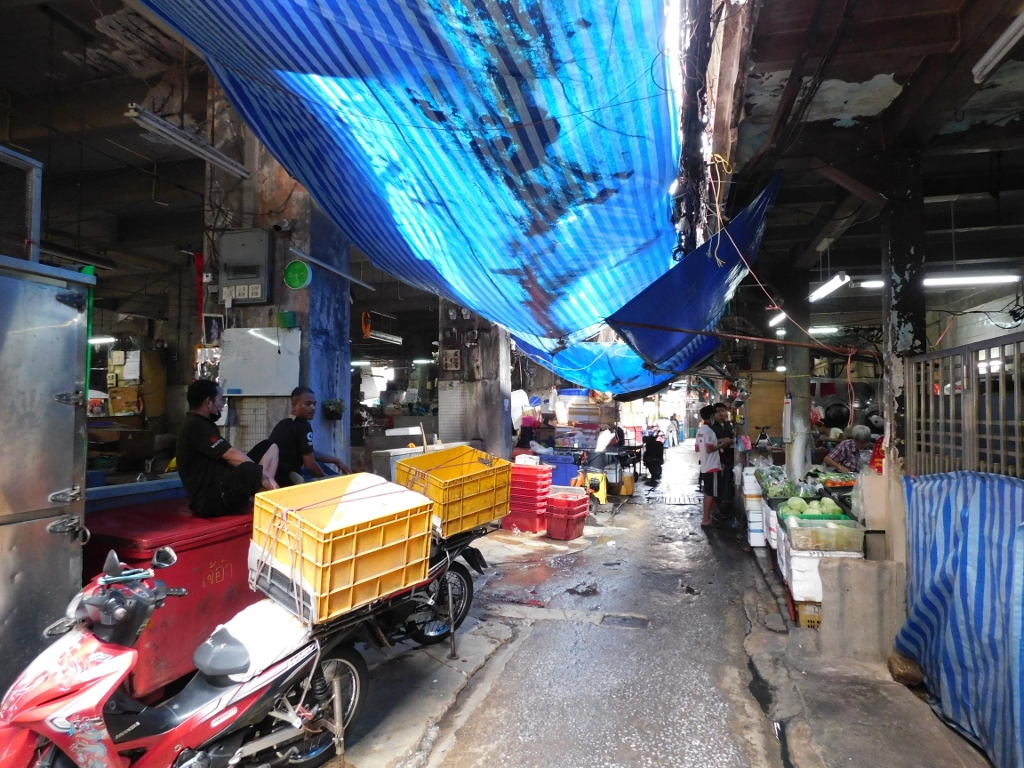 Side areas of a large market in Chinatown in Bangkok
Side areas of a large market in Chinatown in Bangkok
When we reached the market itself, with numerous stalls and an abundance of goods, he explained to me what several things were and how they were used. However, it was too much information for me to remember.
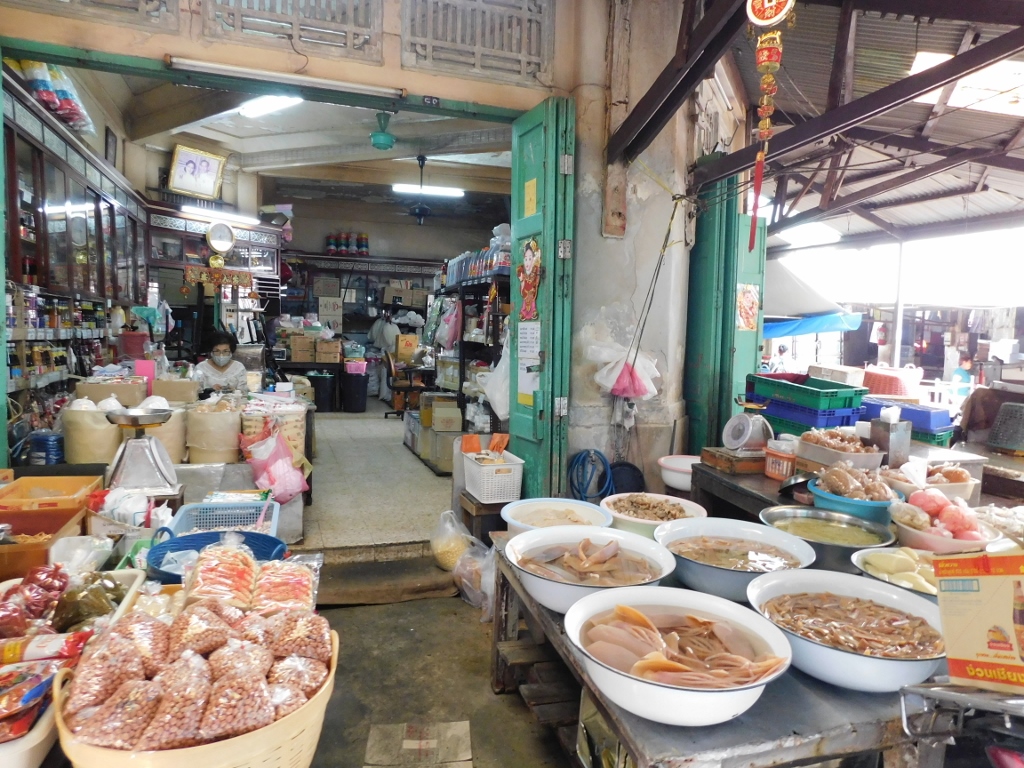 Offer at a large market in Chinatown in Bangkok
Offer at a large market in Chinatown in Bangkok
But something did stick in my memory, like the dried swim bladder also known as fish maw. Although, on the one hand, it is considered a cheaper part of the fish, it is also regarded as a delicacy, of course, if prepared well.
 Offer at a large market in Chinatown in Bangkok
Offer at a large market in Chinatown in Bangkok
After visiting the market, we took a stroll through Chinatown with the idea of heading towards the Chao Phraya River. In some parts of our walk, we followed the same routes that Raša had taken me almost four weeks earlier, but everything was still very interesting to me and I thoroughly enjoyed it. Bangkok is filled with diverse scenes that sometimes marvellously overlap and combine, so I think visitors can keep walking here without ever getting bored.
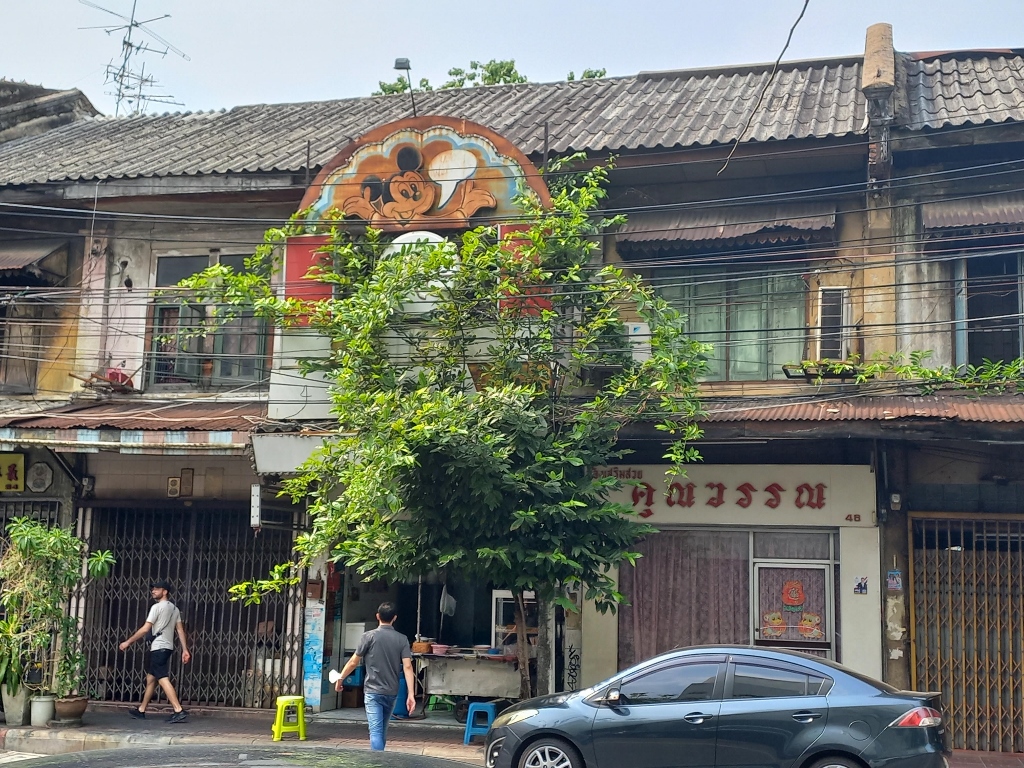 Bangkok, a detail
Bangkok, a detail
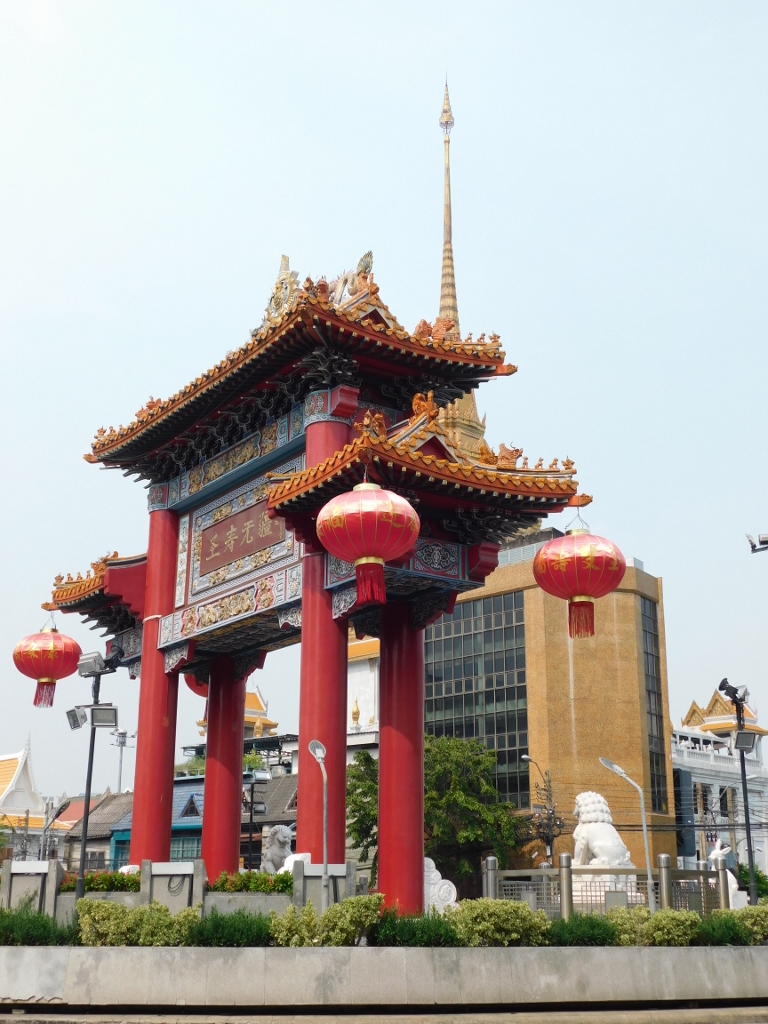 Chinatown Gate
Chinatown Gate
Thus, we also went to a building near the river, where we climbed to the rooftop terrace as it offered a beautiful view of both the city and the river.
 Bangkok
Bangkok
 Bangkok, the Chao Phraya River
Bangkok, the Chao Phraya River
And then, we took some selfies because it was good to send a photo to Mom Rajna to make her happy.
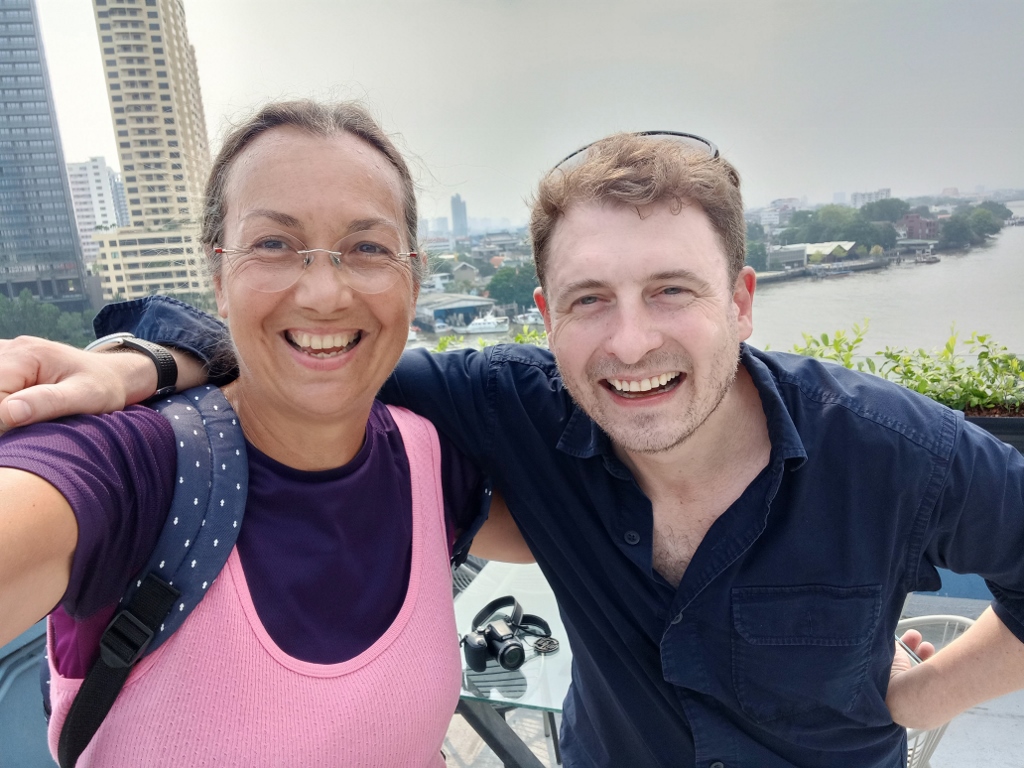 Meeting Luke in Bangkok
Meeting Luke in Bangkok
Then we went to a restaurant/café by the river. Given the intense heat and high humidity, it was nice to sit down and cool off with some freshly squeezed juice.
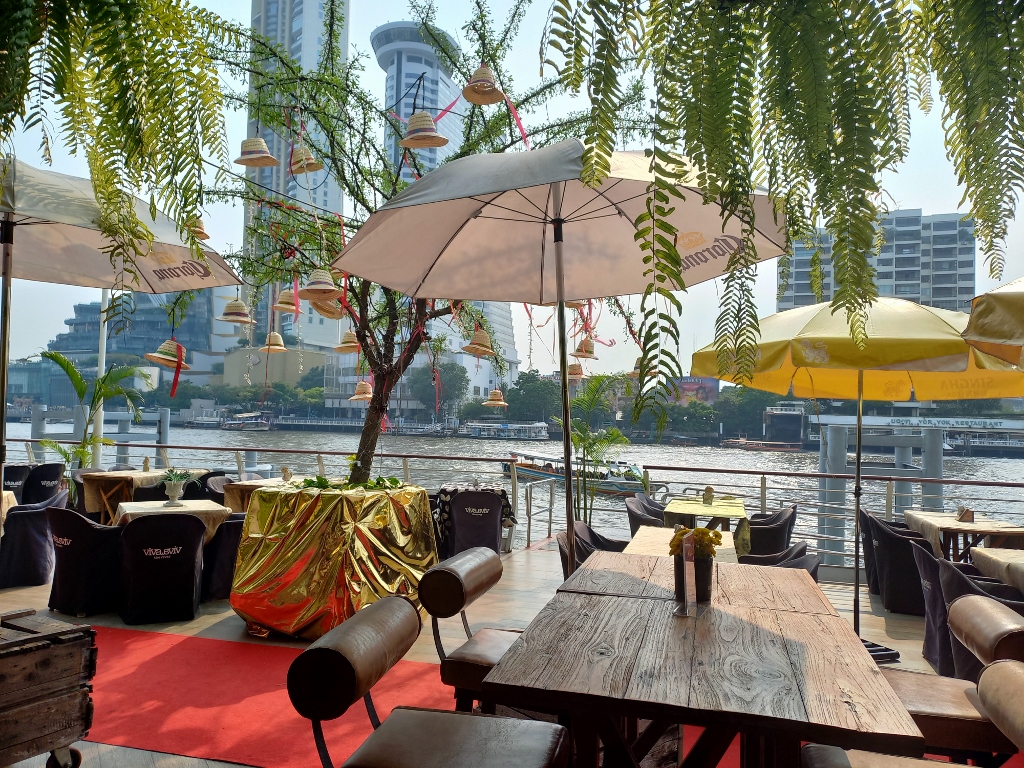 Bangkok, a detail
Bangkok, a detail
After an exceptionally pleasant time together, Luke and I parted ways, and I headed back in the direction of my hotel. Although in the beginning I had to go through a part of Chinatown for the first time in my life, it was completely fascinating that I navigated perfectly well without a map and I soon reached the “familiar” areas. I was a bit puzzled by this, wondering how, but also extremely satisfied, feeling like I knew exactly where I was. Who knows? Maybe I had passed through there in some previous life of mine.
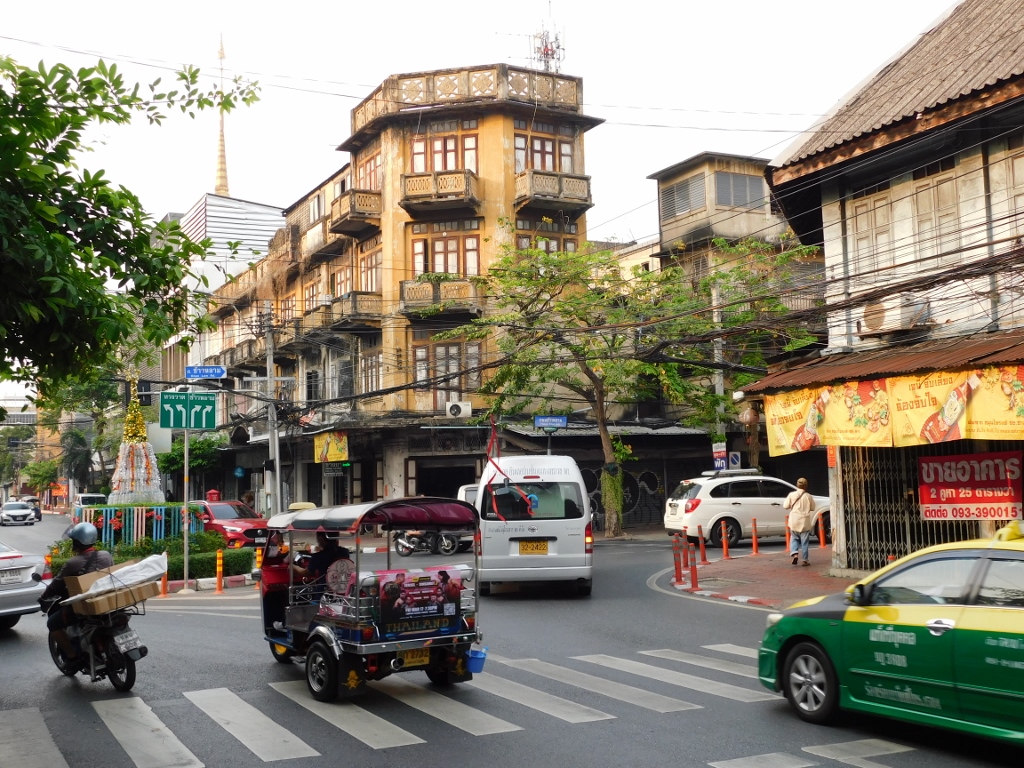 Bangkok, a detail
Bangkok, a detail
While some buildings in the city may appear weathered, likely due to the climate, frequent rains and high humidity, the main thoroughfares in the city are well-maintained, as I can attest and demonstrate with the following photograph.
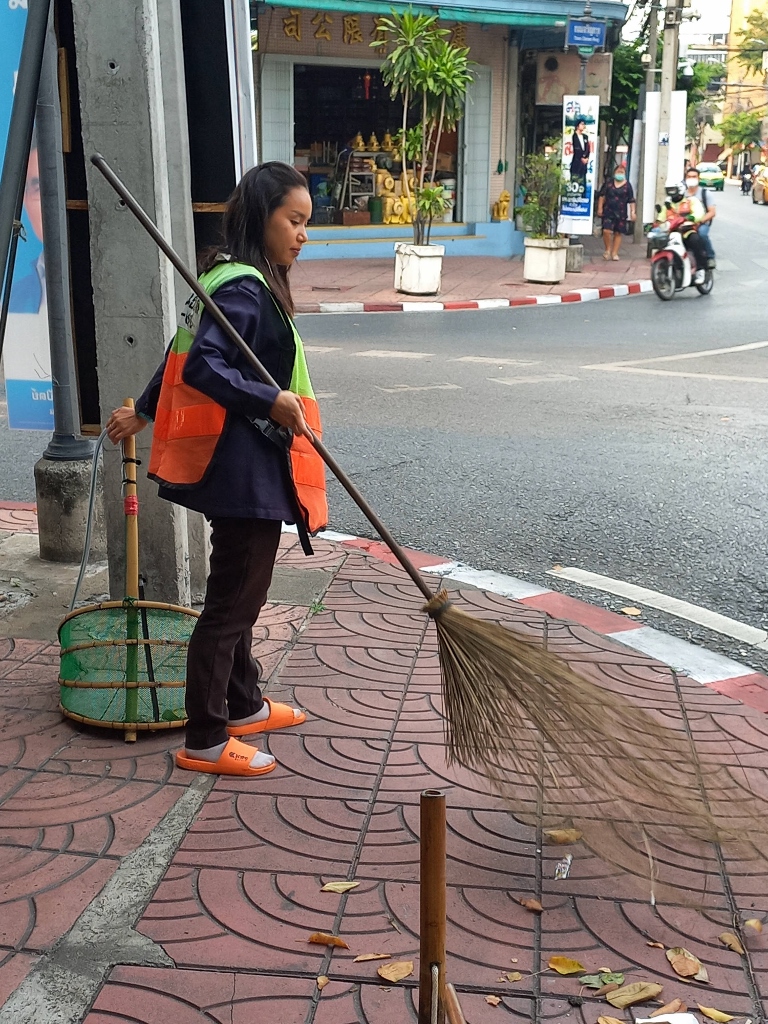 Bangkok, a detail
Bangkok, a detail
When I got close to the hotel, I first treated myself to those wonderful dumplings filled with black sesame seeds and served in ginger tea. It was Raša who introduced me to this dessert during our meeting and since it was my last full day in Bangkok, at least on this trip, I ended up ordering two servings. I think the waiter was quite surprised, but I didn’t care. I was happy. On the other hand, since I liked it so much, when I returned home, I wanted to try to make this dessert myself.
I was worried about finding the right type of rice flour, which I eventually did, but I also decided to incorporate my own idea: instead of black sesame seeds, I used ground poppy seeds. The result, in my opinion, was – spectacular!
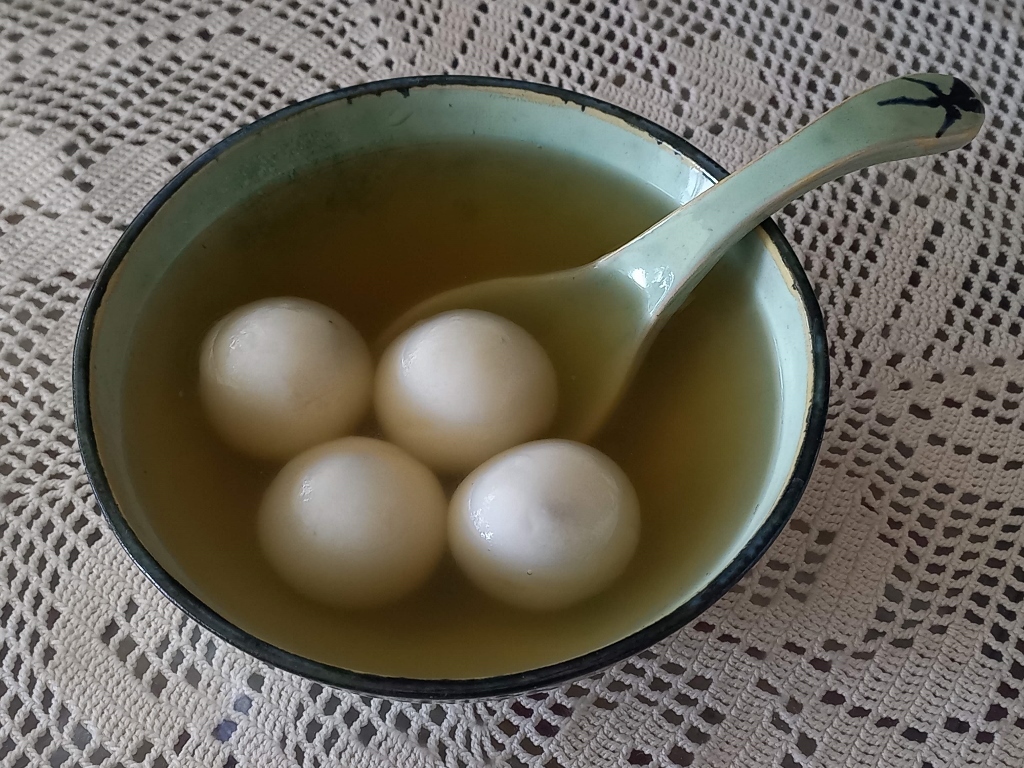 Ground poppy-seed dumplings in ginger tea
Ground poppy-seed dumplings in ginger tea
GLUTINOUS RICE BALLS – TANG YUAN
- 75 g coconut oil
- 60 g brown sugar
- a pinch of salt
200 g finely ground poppy seeds
270 g glutinous rice flour
around 250 ml of water
2 l of water
- 200 g fresh ginger
- 8 tablespoons of brown sugar
Heat up the coconut oil, then add sugar and salt. The sugar needs to dissolve completely. Then add the finely ground poppy seeds, mix everything together, and let it cool.
By the way, the original tang yuan dumplings are made with ground black sesame seeds. However, I quite like my version with finely ground poppy seeds, as I really enjoy poppy seeds. China and poppy seeds have an unpleasant association (through opium and the former mass addiction), but this is a very small amount of poppy seeds which are widely used in Central European cuisine, including in Serbia. I mention this because once a Vietnamese colleague I worked with was appalled that poppy seeds could be bought freely in our country.
Now comes the tricky part – the mixture with poppy seeds needs to be made into balls, but they must be measured to ensure everything is just right. The weight – 9 g. This may seem tedious, but it’s actually not when you organise yourself well. In any case, these balls should be arranged on a tray and placed in the freezer until the dough is prepared.
Combine the glutinous rice flour (I bought it at the Chinese market in Belgrade) and water. Be very careful with the water and add it gradually so the dough doesn't become too watery. It should be firm enough to shape and not stick to your hands or the bowl.
The dough also needs to be measured – 12 g. Shape it into balls. Once all the dough is used up, take one ball and, using your lightly oiled palm as a base (to prevent the dough from sticking), press it to form a circle. Very carefully, using tongs, place one poppy seed ball in the centre of the white dough circle. Then carefully wrap the white dough around the black ball, making sure the white dough doesn't get stained. This is mostly for visual effect, but it doesn't affect the taste.
The balls are boiled in water and are done when they rise up to the surface. Use a slotted spoon to remove them, then drop them into the tea that has been prepared in the meantime.
Making ginger tea is simple – add fresh ginger, sliced thinly, to water and boil for about 15 minutes. Add sugar to taste, but only use brown sugar for the colour.
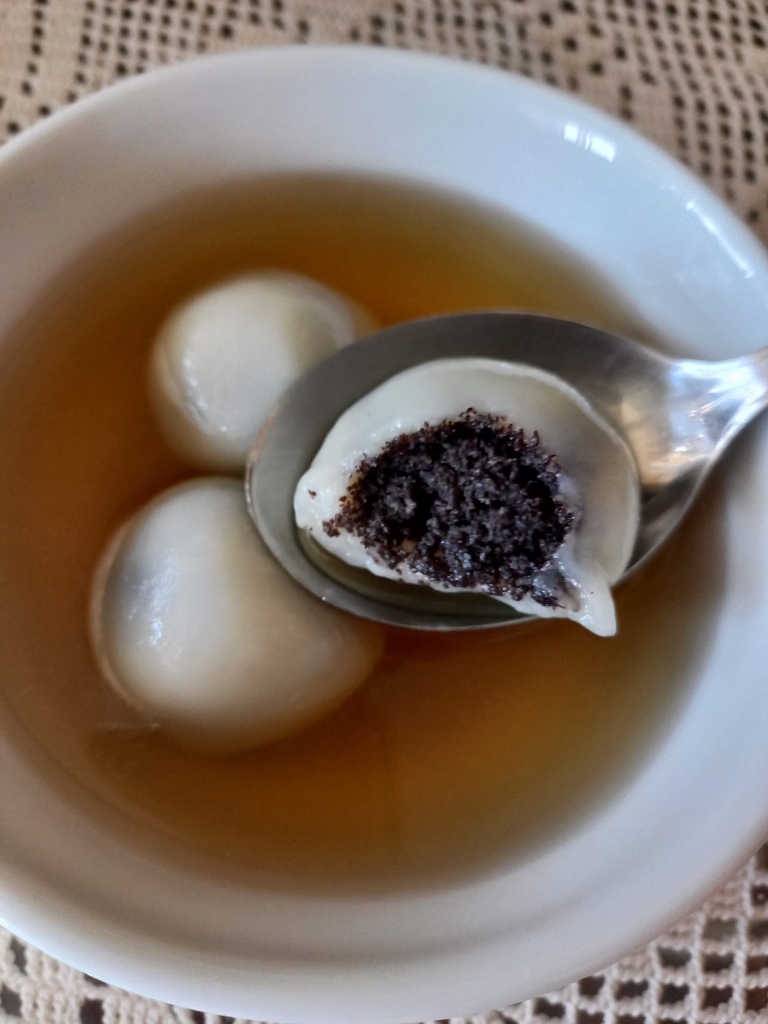 Ground poppy-seed dumplings in ginger tea
Ground poppy-seed dumplings in ginger tea
As for my final stay in Bangkok, afterwards, I strolled a bit more and then headed back to the hotel to rest again. As I’ve mentioned earlier, towards the end of this journey through Thailand, I had symptoms resembling the onset of a cold. Therefore, I tried to rest as often as possible to give my body a chance to recover.
On the way, I passed a row of smaller restaurants in a street near the hotel. It is important to note that this wasn’t a pedestrian street at all.
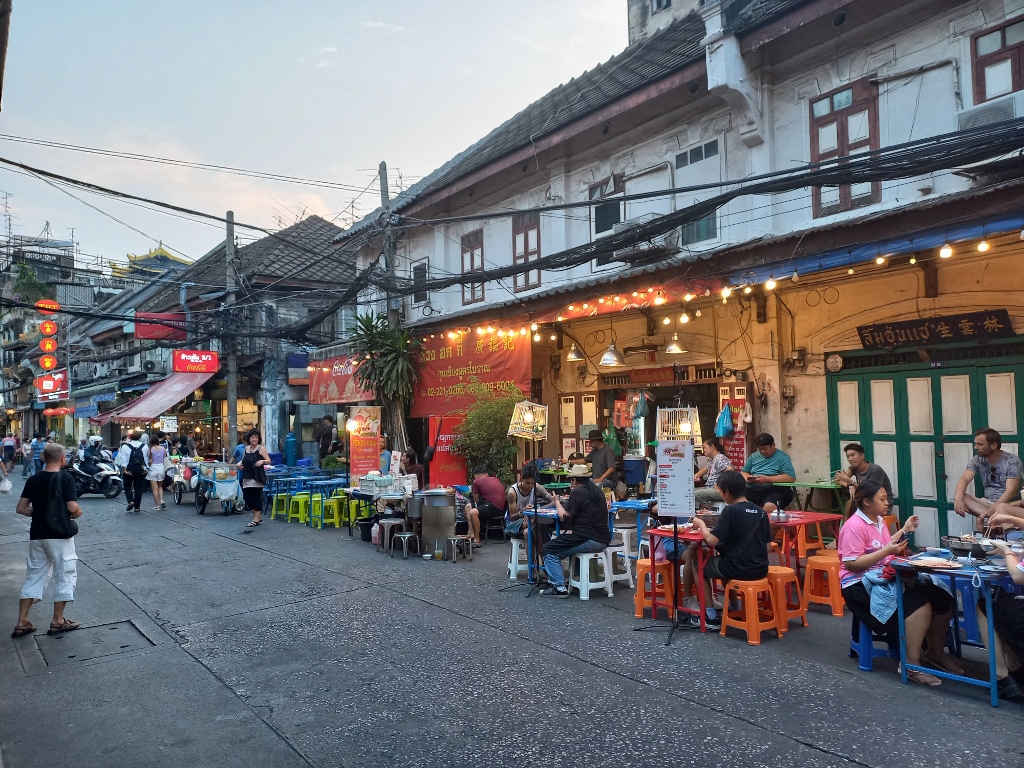 Bangkok, a detail
Bangkok, a detail
Soon, it got dark and after some rest, I decided to go out again and take a stroll to see the evening life in the heart of Chinatown. First, I went to the rooftop terrace of the hotel where I was staying. From there, I captured details of Bangkok at night before descending to the street.
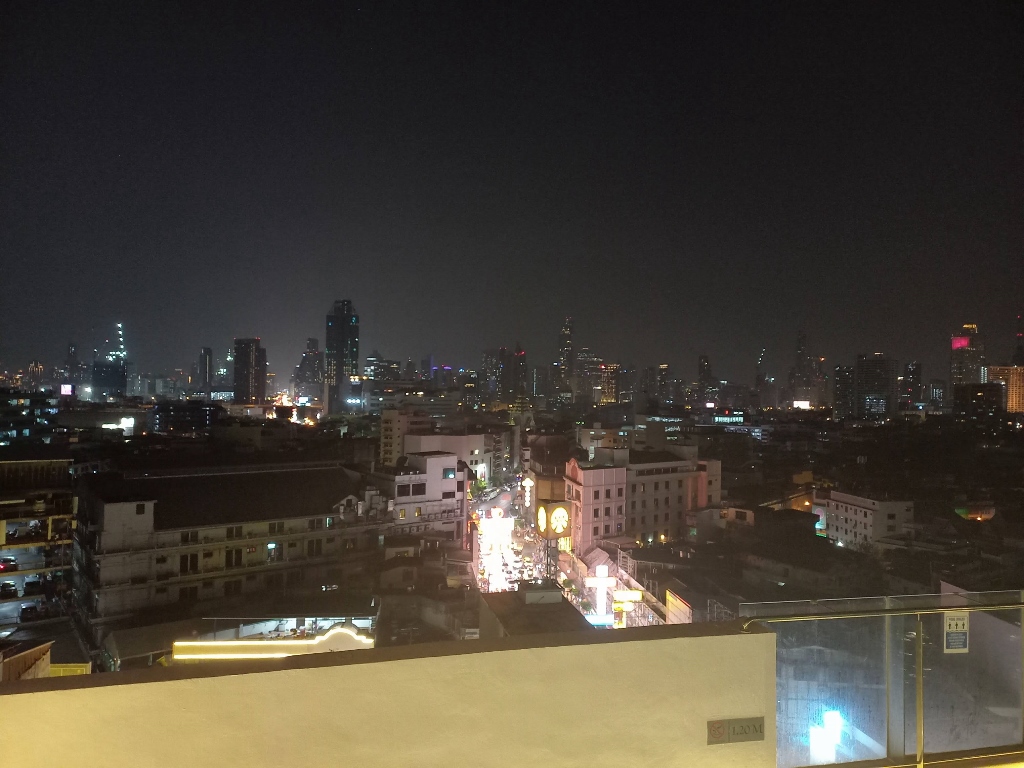 Bangkok at night
Bangkok at night
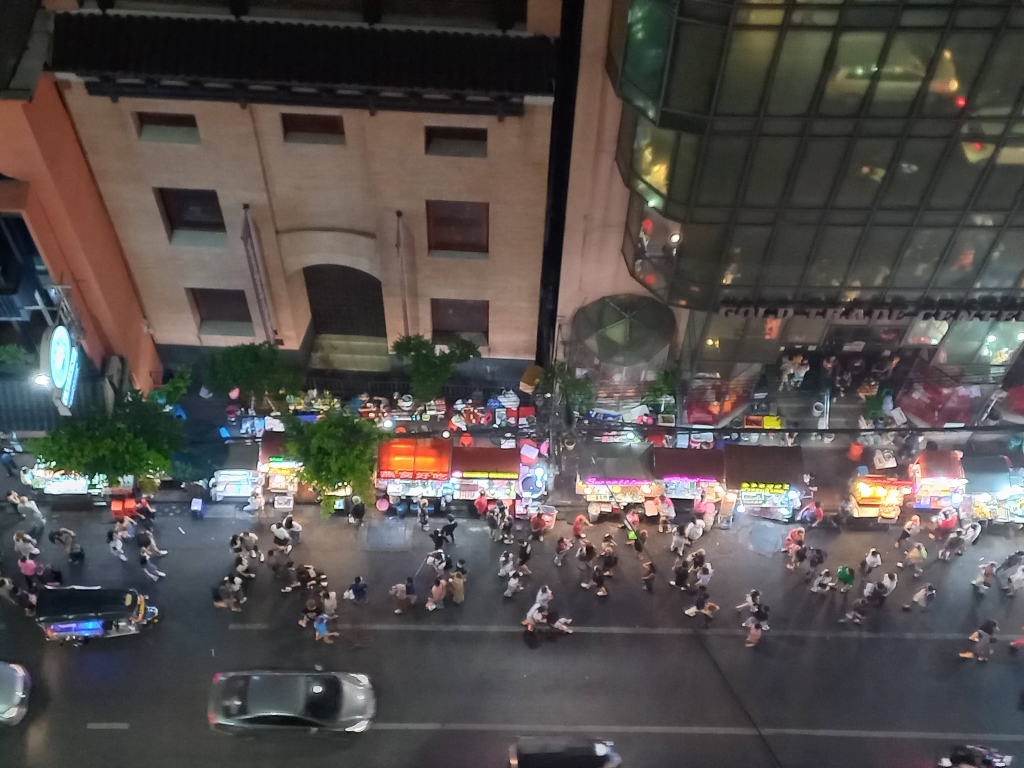 Evening in Bangkok’s Chinatown
Evening in Bangkok’s Chinatown
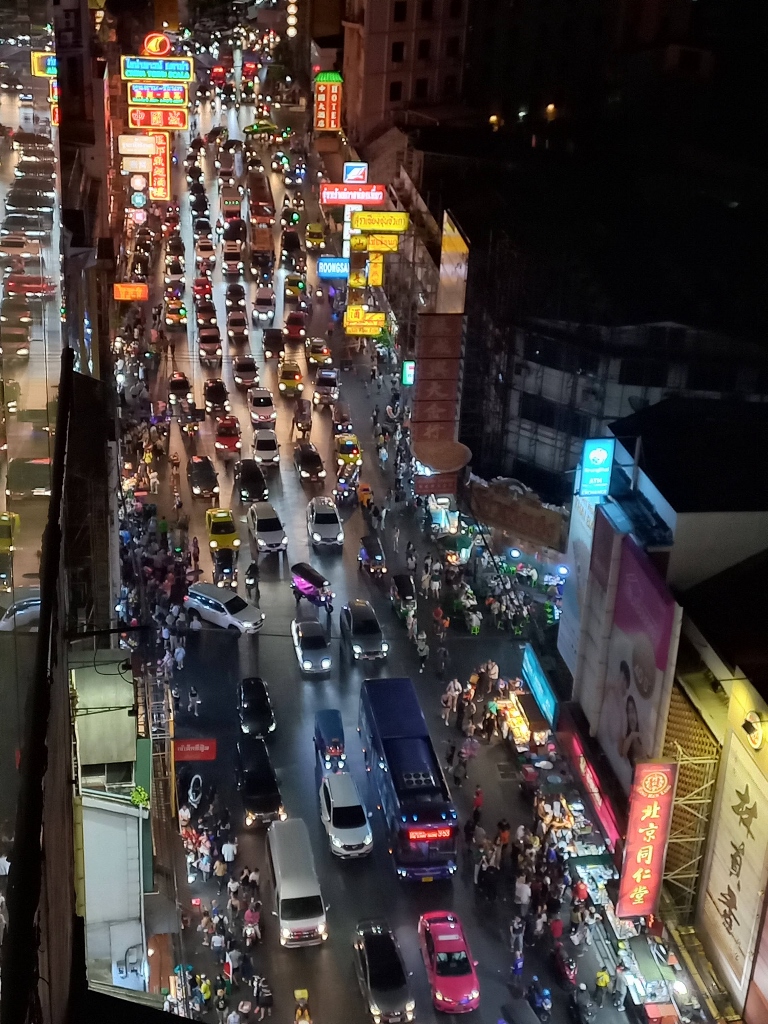 Evening in Bangkok’s Chinatown
Evening in Bangkok’s Chinatown
It was quite chaotic, with an incredible crowd caused by numerous vehicles, a vast number of tourists and local population. However, I think the main star of the show was – food.
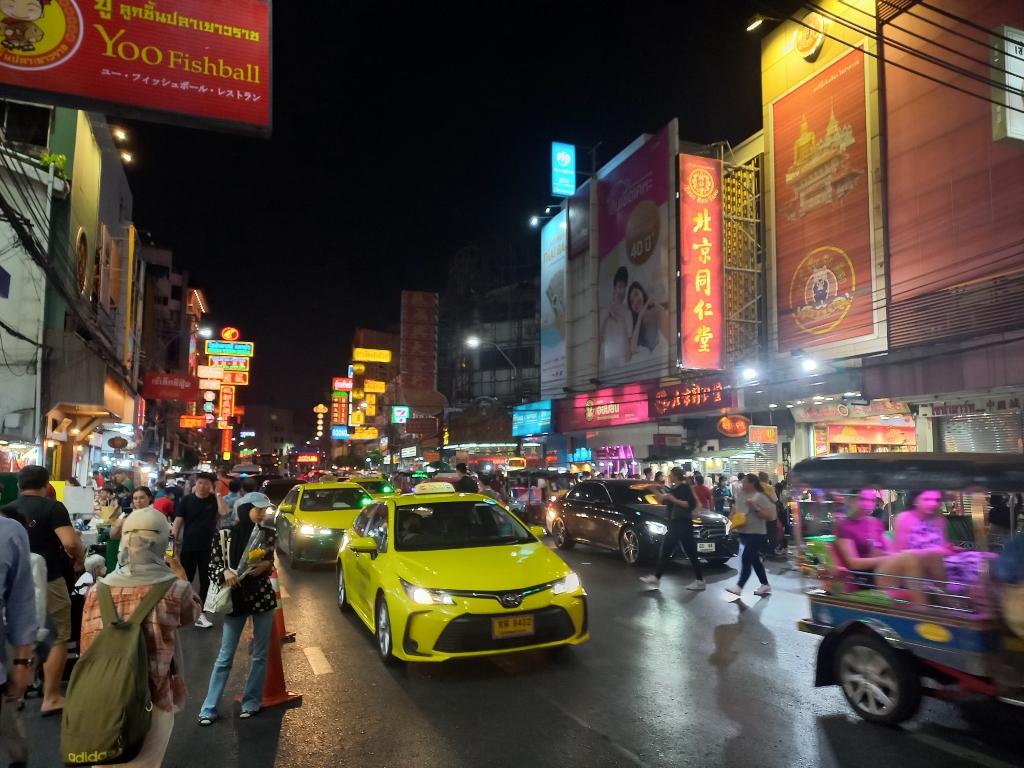 Evening in Bangkok’s Chinatown
Evening in Bangkok’s Chinatown
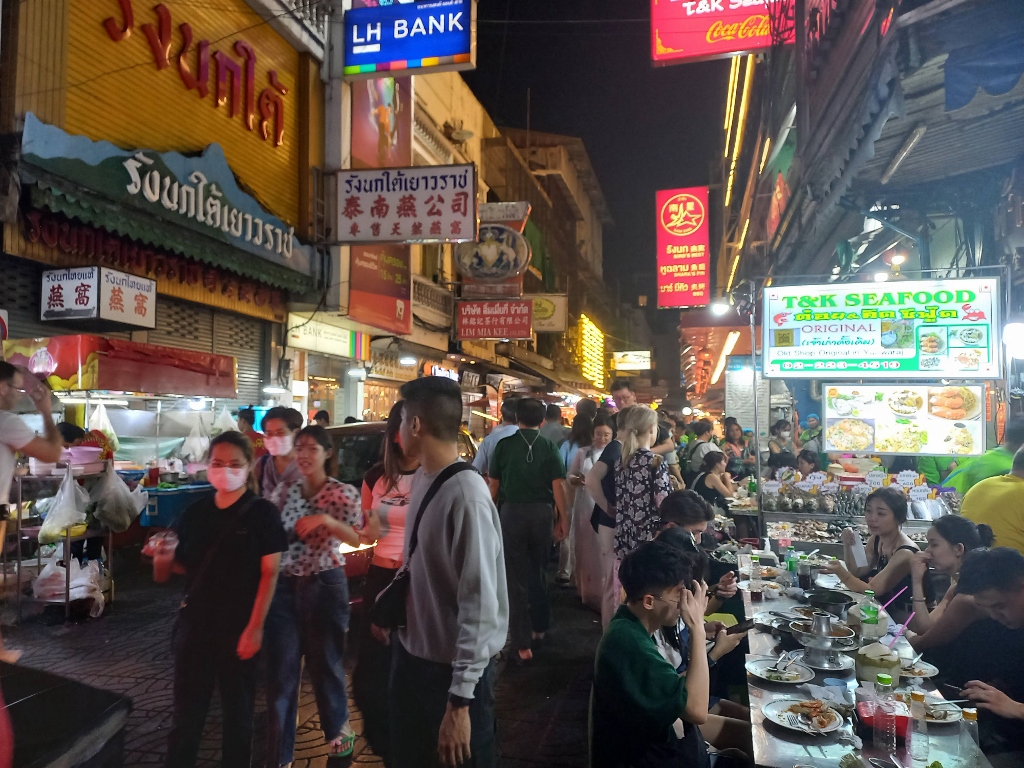 Evening in Bangkok’s Chinatown
Evening in Bangkok’s Chinatown
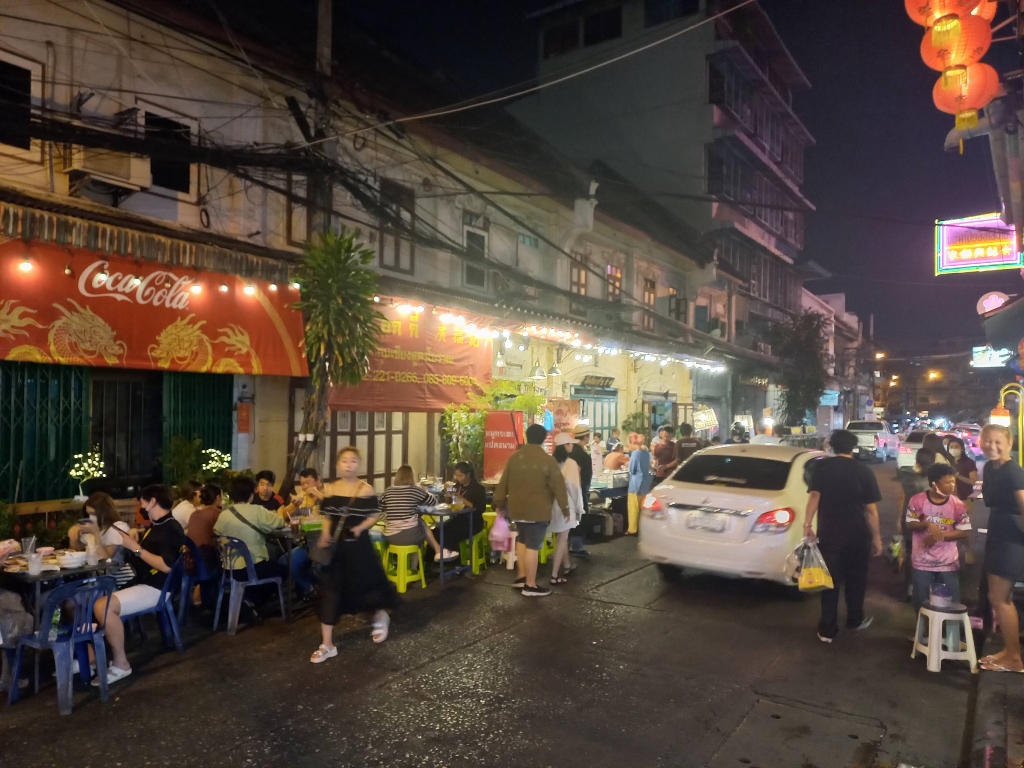 Evening in Bangkok’s Chinatown
Evening in Bangkok’s Chinatown
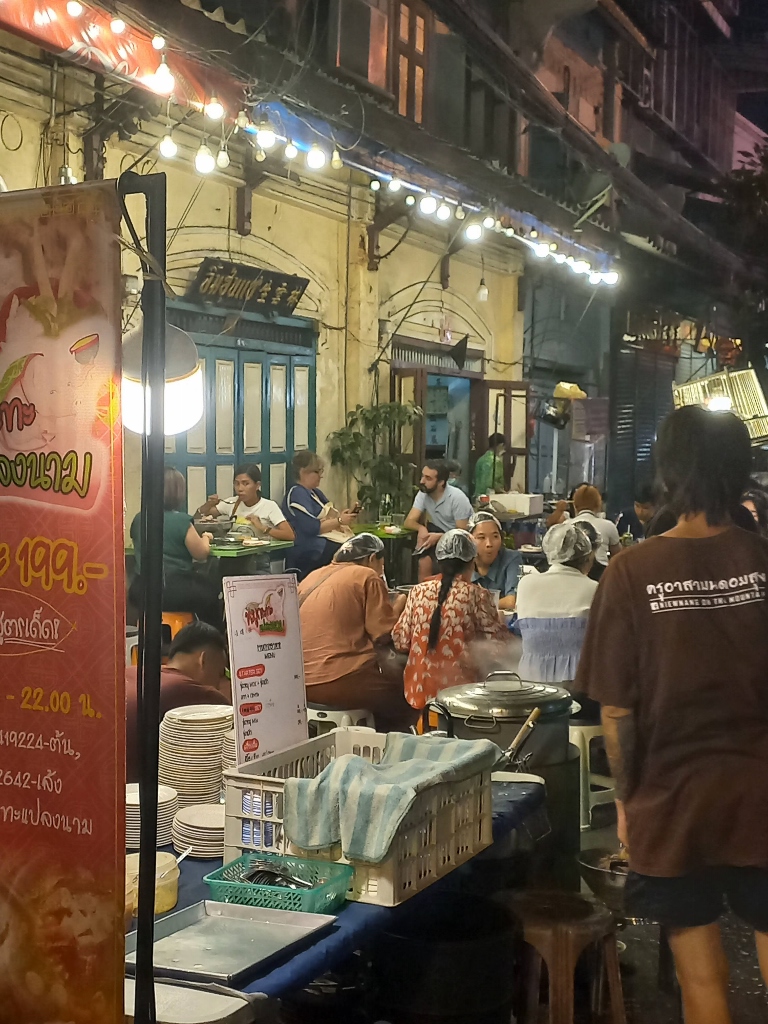 Evening in Bangkok’s Chinatown
Evening in Bangkok’s Chinatown
I also made a couple of short video clips, so here they are combined.
The next day, I was heading home, but the flight from Bangkok was scheduled for the afternoon. I arranged with the hotel to book a taxi for me at noon, which meant I had a few more hours for a stroll around the area.
To start with, I went back up to the terrace on the roof of the hotel where I was staying and once again, I admired the beauty of urban Bangkok, despite the clouds that had appeared in the sky.
 Bangkok
Bangkok
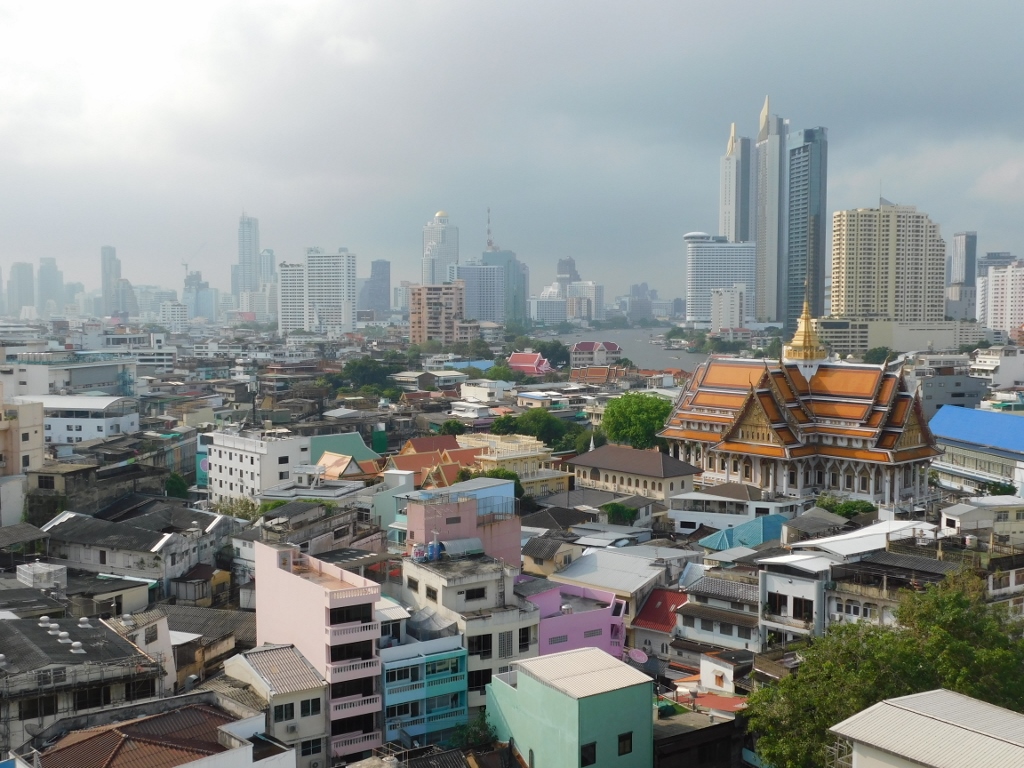 Bangkok
Bangkok
I then decided to explore the “alley” that leads to the New Market or Talat Mai in Chinatown, the same route I had taken with Luke the day before. It was interesting to venture in that direction on my own and it was once again a picturesque experience. It is actually a large area that encompasses not only passages between buildings, but also the space beneath columns that support the entire structures at the ground level. It is more of a non-touristy, wholesale or preparatory section of the New Market.
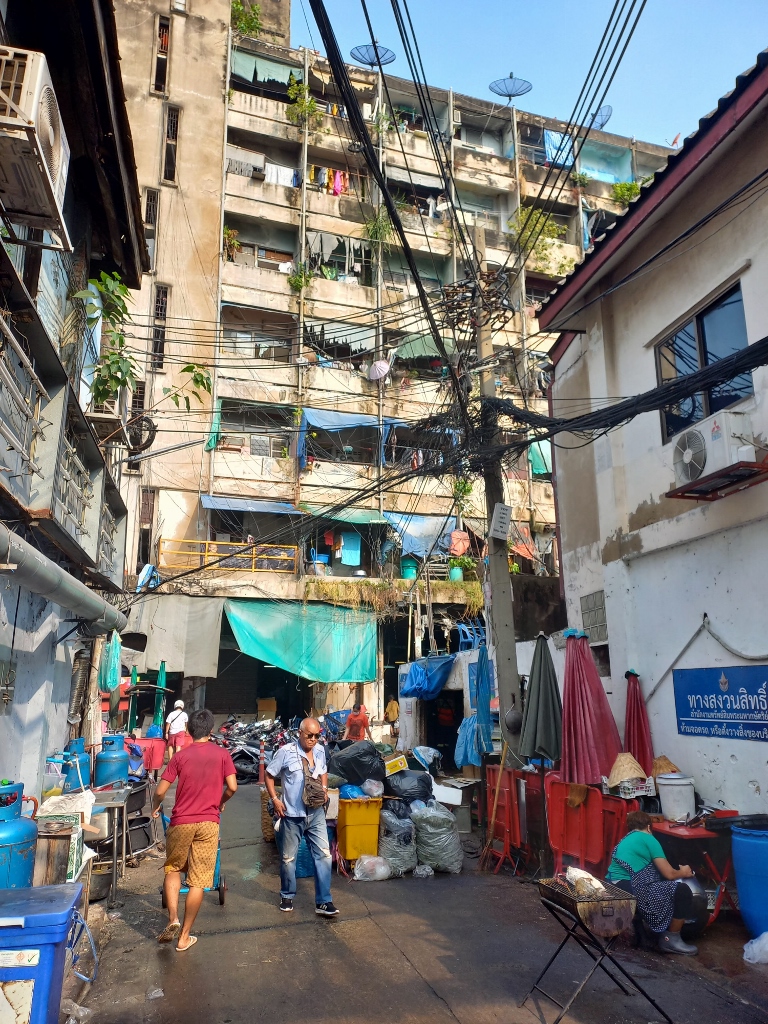 Bangkok, a detail
Bangkok, a detail
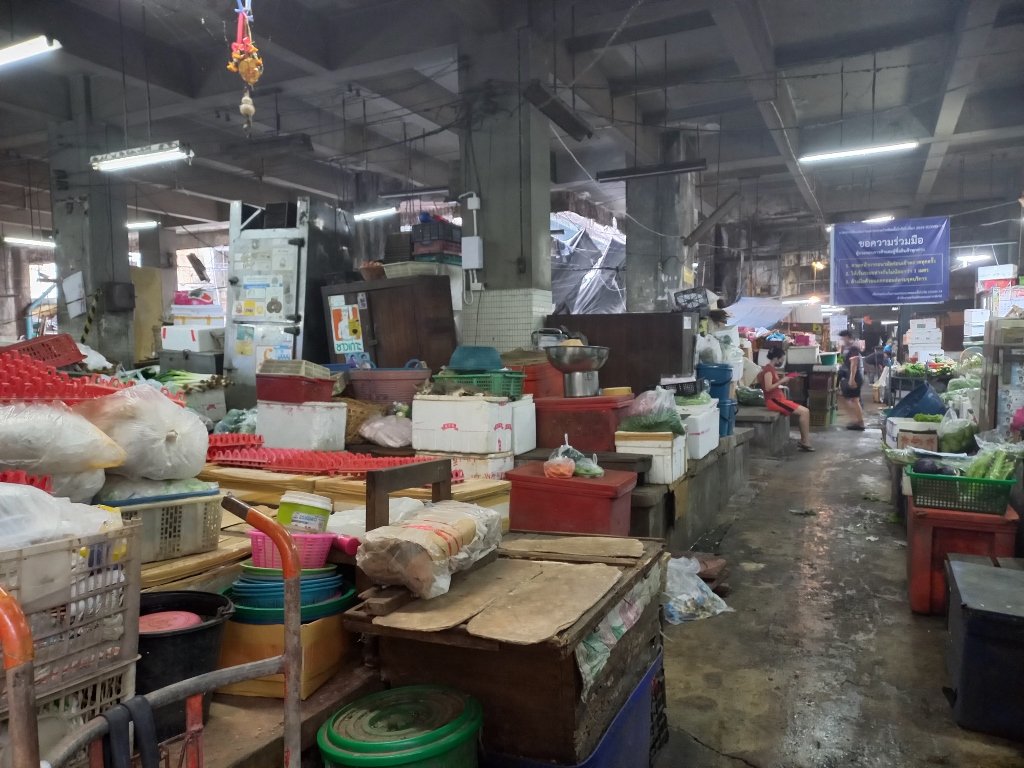 Bangkok, a detail
Bangkok, a detail
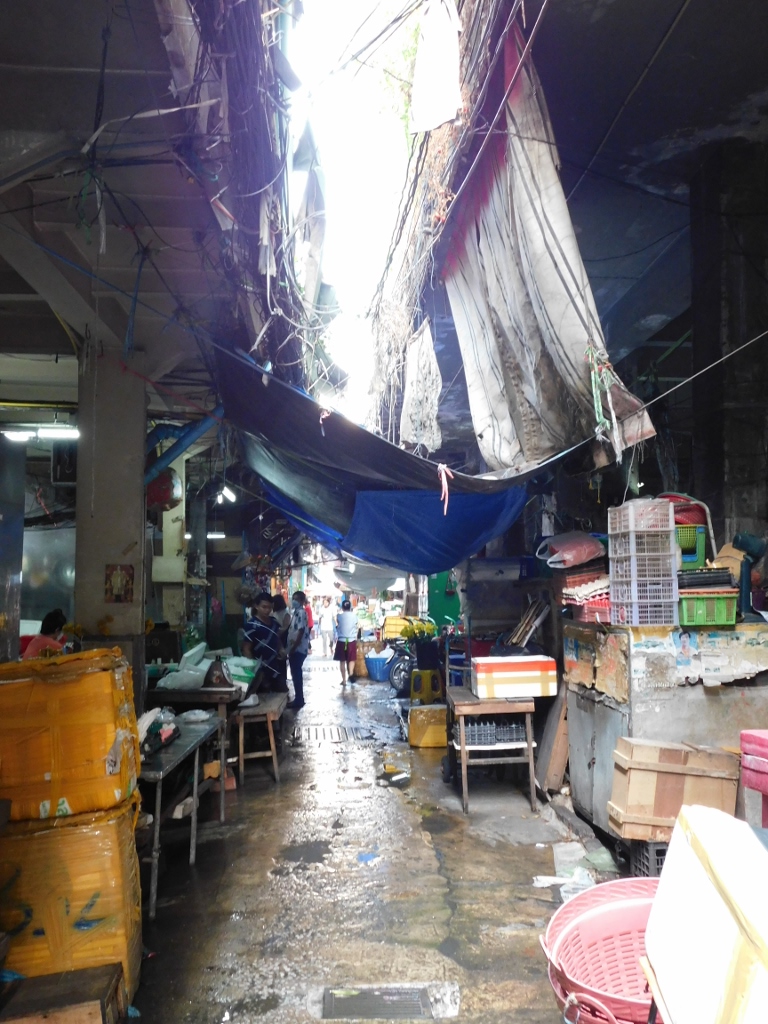 Bangkok, a detail
Bangkok, a detail
A diverse range of goods was being prepared for sale there – plenty of vegetables, for sure, but I also passed by two guys who were skilfully cleaning shrimps and preparing them for delivery, most likely to a restaurant.
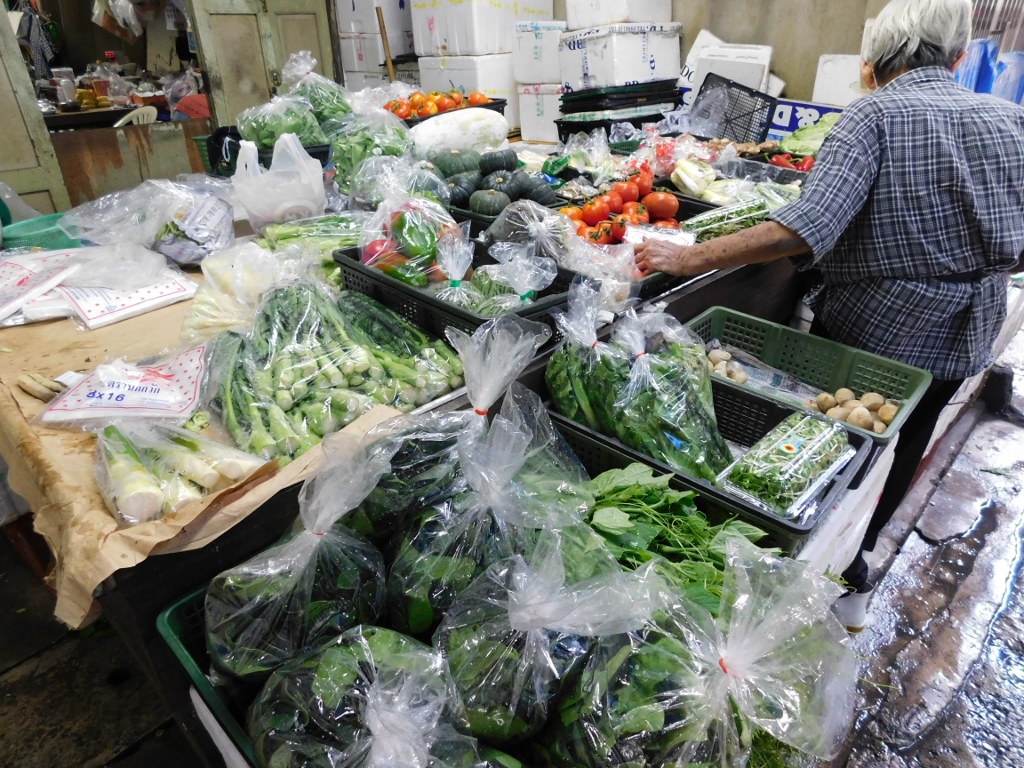 Bangkok, a detail
Bangkok, a detail
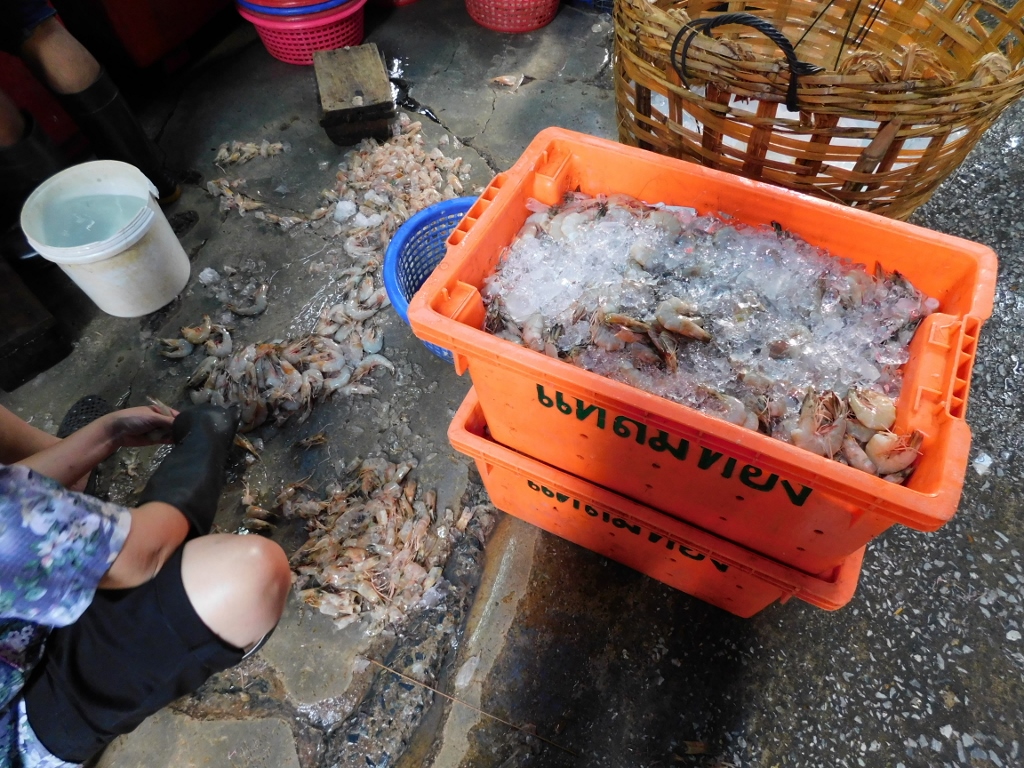 Bangkok, a detail
Bangkok, a detail
That’s how I reached the main street within the New Market and somewhere there, I found the spice shop, that Luke had mentioned the day before, renowned for its white pepper.
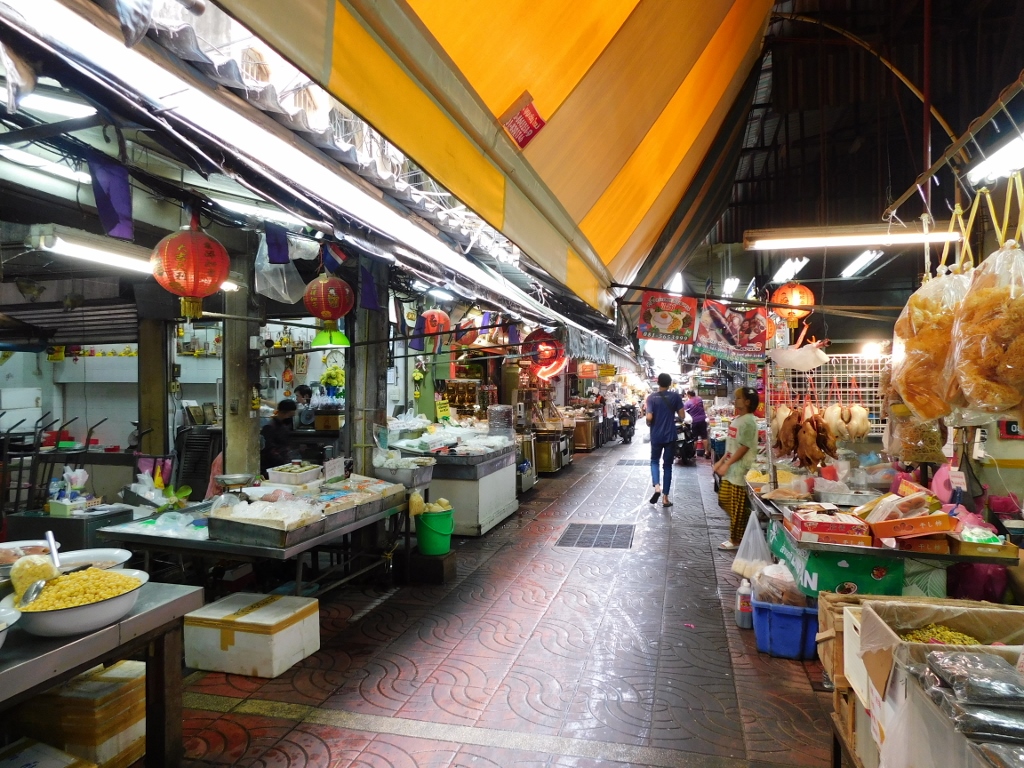 Bangkok, Talat Mai market
Bangkok, Talat Mai market
Perhaps my supplies of white pepper at home aren’t of the same quality, but I knew I had them, so I didn’t focus on pepper of any colour. However, I took my time exploring other spices. I was thrilled to find an instant green curry mix. From what I could read on the package, everything was included except the meat. So, the meat of choice is prepared as recommended by the recipes and then everything is combined. I bought a couple of packages because I felt the need to try making it at home. I did just that and the result (along with the recipe) can be seen in: https://www.svudapodji.com/en/thailand-6/.
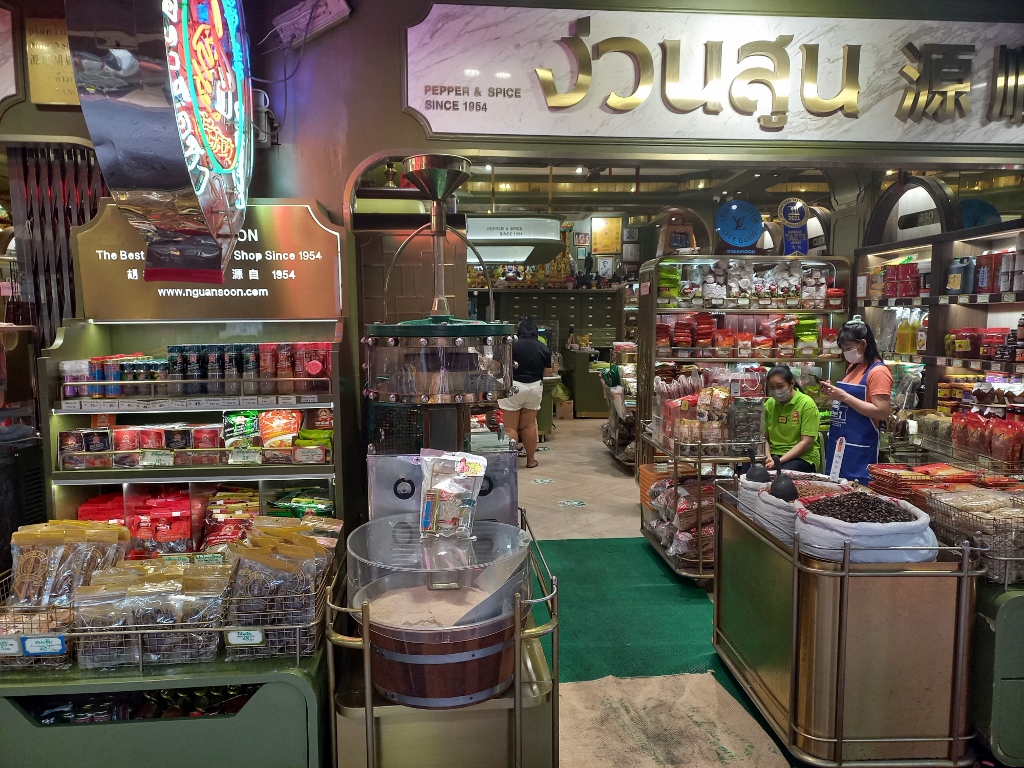 Bangkok, Talat Mai market
Bangkok, Talat Mai market
I bought a few more spices that caught my interest and then I went to the end of the market, capturing a few more interesting stalls along the way – one with lotus roots used in cooking and another with various dried seafood.
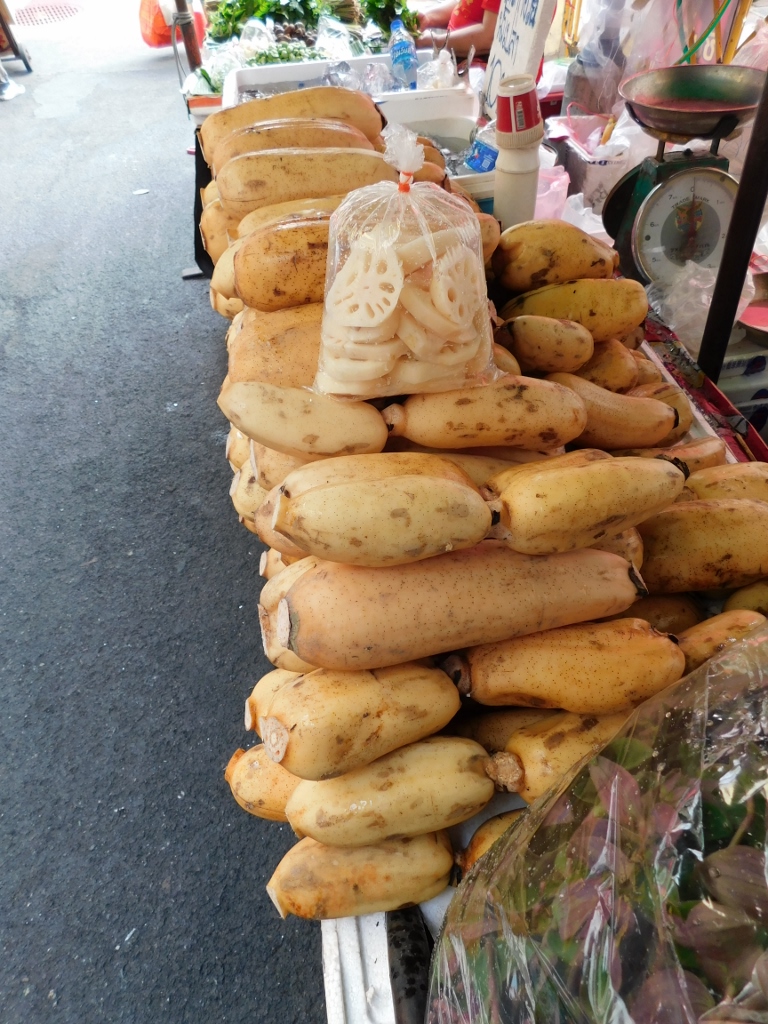 Bangkok, Talat Mai market, a detail
Bangkok, Talat Mai market, a detail
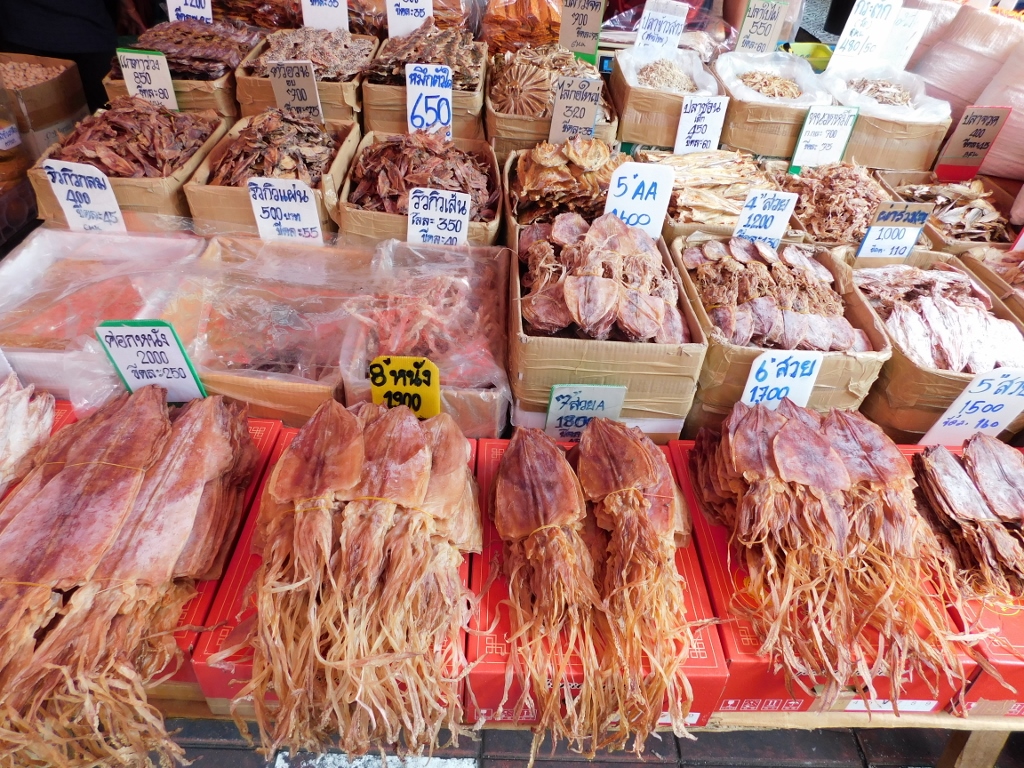 Bangkok, Talat Mai market, a detail
Bangkok, Talat Mai market, a detail
On the way back to the hotel, I ate a few more spring rolls on the go and a peeled mango.
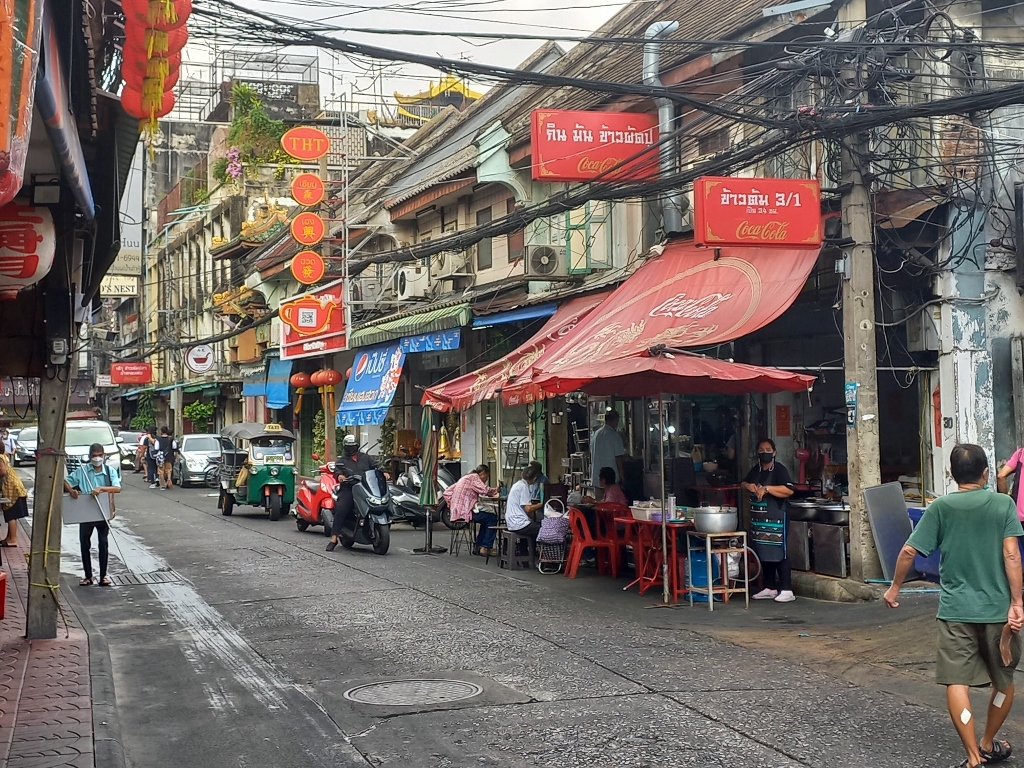 Bangkok, a detail
Bangkok, a detail
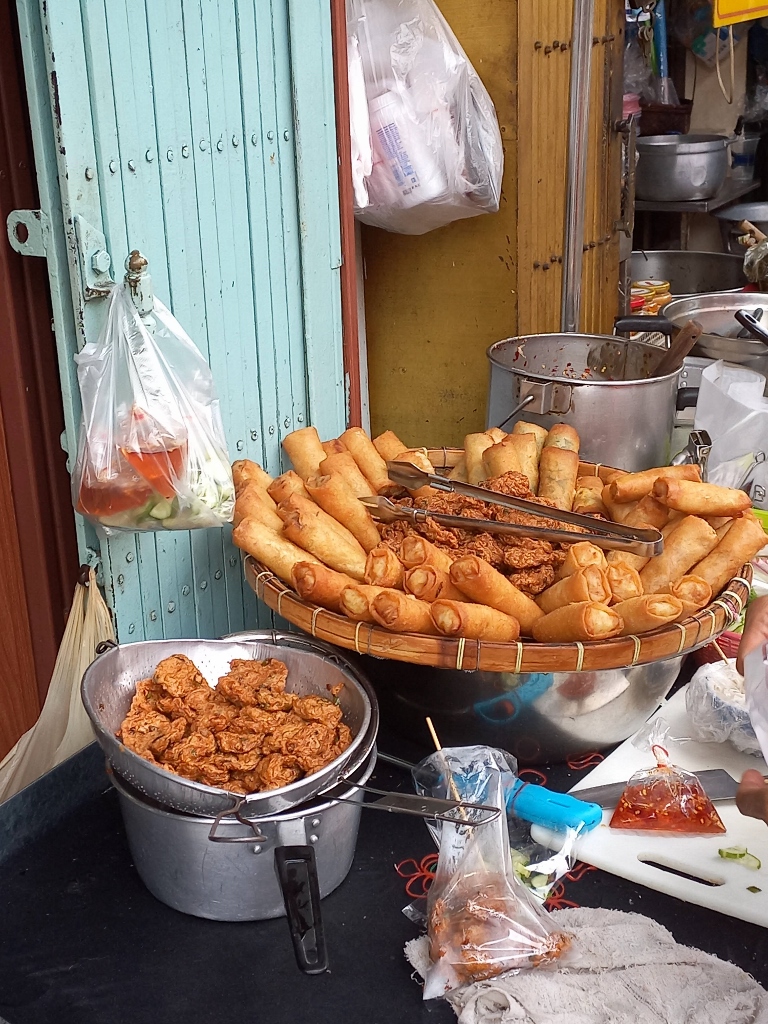 Bangkok, a detail
Bangkok, a detail
When I returned to the room, I had to shower again because, despite the fact that it was only 9:40 and I had been walking very slowly and in a relaxed manner, all on flat ground, I was covered in sweat. The reason for this was the high humidity that characterises this part of the world.
Now I had enough time for my body temperature to normalise and to pack completely. When I went down to the reception, the taxi driver was already waiting for me.
Although my impression from the main international airport in Bangkok was that it was chaotic and completely disorganised, leading me to rush to the gate the whole time while grumbling that it was the worst airport I had ever been to (and I’ve been to quite a few), it still couldn’t spoil my overall impression of Thailand.
I have to admit that the beaches I visited mostly created a sense of disappointment in me, although not all of them were bad, as I’ve already written. However, the “continental” part of the country, the nature, temples, historical sites, food, various little things and the life I witnessed while travelling through this fascinating country were more than enough to fill me with great satisfaction for having the opportunity to explore Thailand quite nicely. It was a month of intense movement and sightseeing, but every moment was absolutely worth it, even those resorts that didn’t leave a good impression on me.
And here is where I was:
Completely content, fulfilled and at peace with a gentle smile on my face, almost like Buddha, I was now ready to take off and head home.